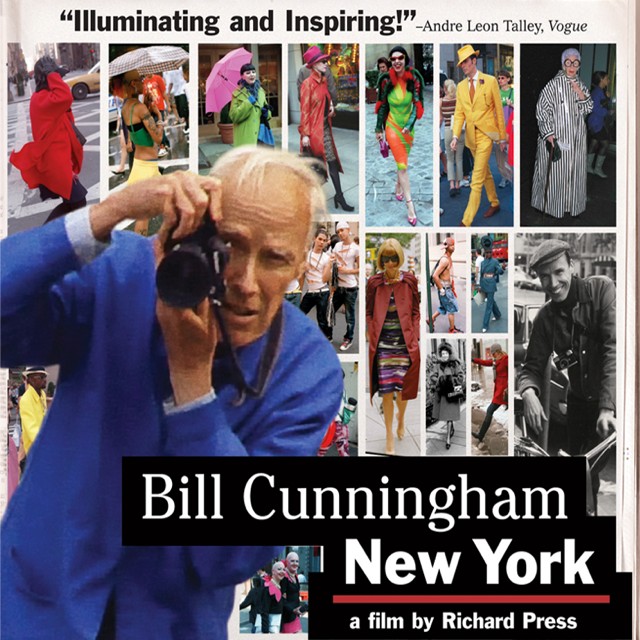There was always a sense of a kind of quotidian world...that one sees in photographs that were done at the turn of the century, for example, by the Seeberger brothers, or different people who were documenting the bon monde, but it wasn't really street style in that it wasn't, theoretically, "ordinary" people, going about their business dressed in fascinating ways.
總會有那么些場景或照片記錄著一個國家的變遷,比如說Seeberger兄弟還有其他這些人的照片見證了bon monde,但這些都不算真正意義上的街頭潮流理論上的 "普通人"那些僅僅去做生意,或是什么事情時穿著很棒的人普通人。
That really begins to happen in the 1960s, and that is the moment which Bill begins.
真正的街頭潮流大概開始于二十世紀六十年代Bill大概也是那時開始拍照的。
On an Easter Sunday, I came back here to get film, and the phone rang and I picked it up, and it was the Times fashion critic and editorial writer Charlotte Curtis, who I knew very well.
有一次的復活節我自己回來洗我的照片忽然接到了一個電話,是《紐約時報》時尚評論的編輯Charlotte Curtis。
And she said, "Bill, grab your cameras and get up to the Sheep Meadow as quick as you can. They're having a be-in."
她讓我馬上帶著相機去Sheep Meadow她說,"那兒正在舉行be-in"。
What the hell is a be-in?
我完全不知道什么是be-in。
I jumped on my bike and went up to the Sheep Meadow, and there were thousands of kids.
于是我馬上騎車跑到Sheep Meadow那兒有很多很多的年輕人。
Oh! I mean, you just never saw anything like it.
我從來沒見過那樣的場景。
All the flower children, the hippies, everything,
那些帶著花兒的孩子,嬉皮士那一切都很新奇。
All up there, and it was a lovely day, and they were lying on the grass or the dirt or whatever it was, and they were dressed.
那真是有趣的一天他們都打扮的很有趣躺在草地上或是泥地里。
It was marvelous, and that really did me in.
那真是很奇妙完全吸引住了我。
From then on, that was it, kid.
從那時起,我開始拍這些年輕人。
My Sundays and Saturdays...Saturdays down in SoHo, and Sundays up in the park...were completely taken.
我的周末計劃有了些改變周六在城里拍照周日跑到這些公園去照。
That was it.
就是這樣。












